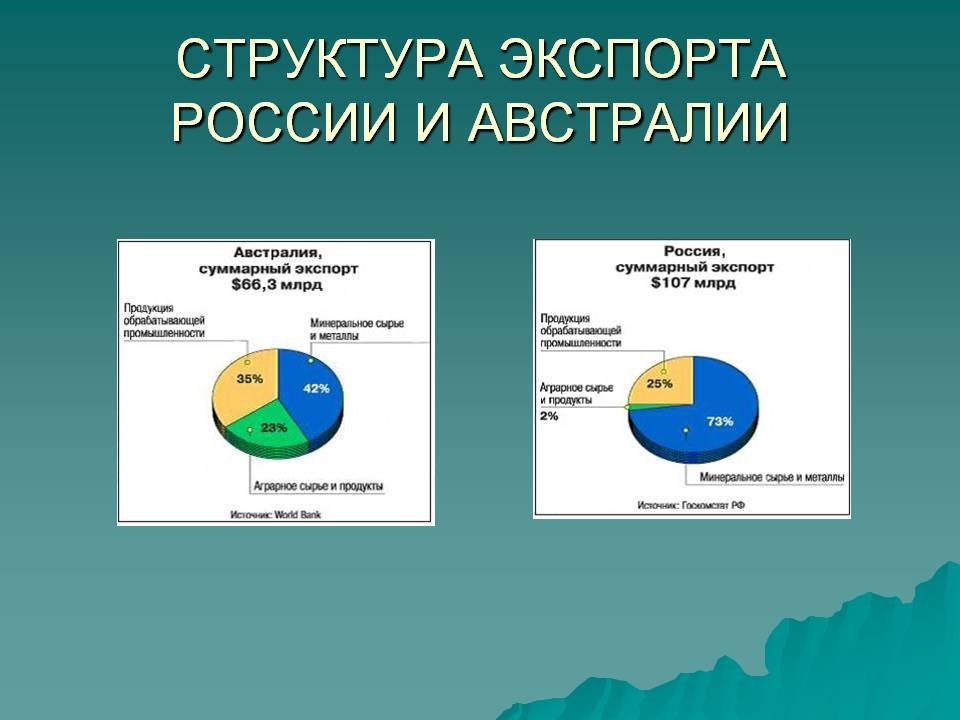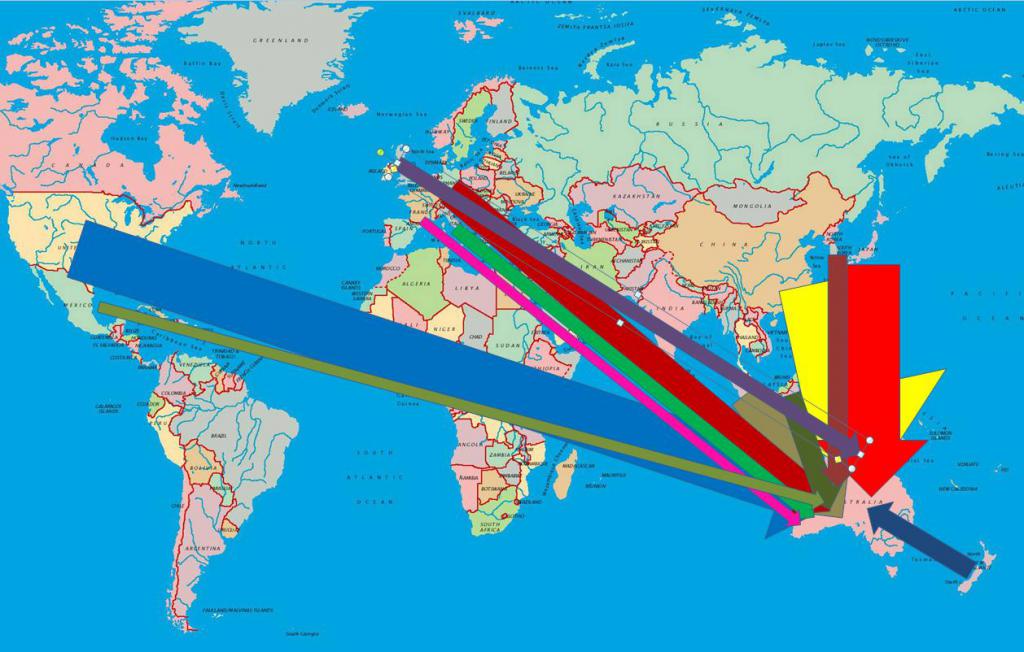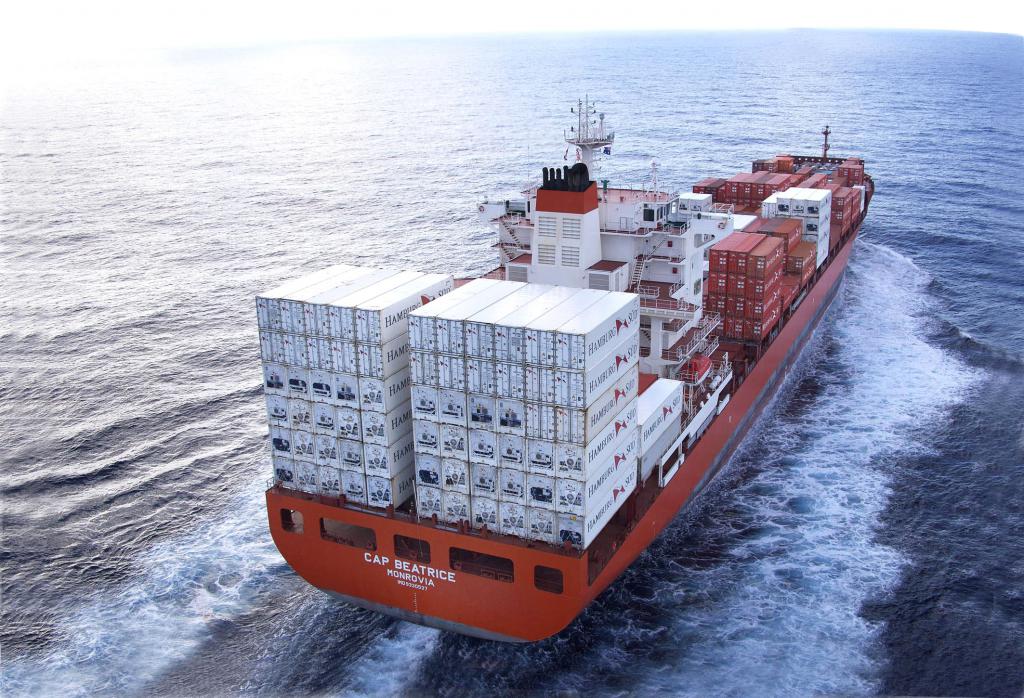Australia is a major player in the global economic arena, if only because its economic system is one of the largest. As for international standards, its share globally is about two percent. The growth and development of the economic system is based on the primary sources of state profit. The highest rates are observed in the service sector, in the mining industry and the agricultural industry.
What does Australia export?
It is worth starting with foreign trade, because this is the main link in the Australian economy. Turning to the numbers, export is a quarter of a country's national income. Particular growth has been noticeable in the past 10 years, it was at this time that Australia increased its foreign trade many times, developing both well-trodden paths and conquering new sales markets. Of course, the services sector is considered the largest and most developed sector of the state economy, and mining is in second place. The map and the chart of export and import in Australia (further in the article) clearly reflect the situation.

Mining industry
Australia exports in large quantities the following raw materials: coal (both stone and brown), uranium, oil and oil products, gold and silver. These are the main export destinations in the country. Over the past decade, Australia has fine-tuned the bauxite mining process, and with regard to the sale of nickel and iron ore, the country is firmly in third place on the world stage. But Australia’s success does not end there, it is also worth mentioning the significant deliveries of metals such as copper, zinc, manganese, and lead to other countries.

The government has deservedly received world leadership in the sphere of mining of diamonds and other precious stones. A large percentage of exports accounted for opals, topazes, sapphires. As for the mining sector, its component in exports is quite high, this is ¼ of the country's total exports. As for cargo transportation, deliveries are made to other countries by sea or air. This is the basis for Australia's export and import structure.

What else can Australia boast of?
If we talk about land space, then the whole half is occupied by farmers and pastoralists. In this area, the first place belongs to sheep breeding. If we turn to the numbers, the indicators deserve respect, because Australia gives about 90% of the wool produced for export - this is absolute leadership on the world stage. Thin wool called muton is in special demand and appreciated in the world. It is in Australia that it is of high enough quality and is most popular.
Why is that?
Such a high level of development is achieved due to the excellent ecological situation in the country, while Australia boasts a large number of pastures, which can be considered a big plus and favorable circumstances for the development of livestock. Therefore, this sector is mainly focused on exports. Live sheep come from here, which are mainly exported to the Gulf countries. And also the country takes a leading position in the supply of veal and beef. In addition to the Australian export chart, you should pay attention to the map, which clearly reflects the current picture in the field of import and the presence of foreign investment in the country's economy, in particular, in the mining and financial fields.

Agricultural goods
The other half of the country's exports are goods produced by agriculture. Number one is cereals, legumes, oilseeds. The scale of exports is huge.As for world estimates, the areas allocated for their cultivation occupy leading positions in the world and are considered the largest.
It is also worth mentioning about food products, from Australia transportations are carried out to various places in the world. A large percentage of exports are wheat, barley and other crops, as well as cane sugar and various fruits. The country's economy can be called export-dependent, therefore, any reduction in prices negatively affects the economic sphere of the state as a whole. It depends on Australia's export structure.

Import to Australia
From other countries, Australia receives large quantities of cars, computers, telecommunications devices, various vehicles (from cars to airplanes), chemicals and pharmaceuticals, paper products and food products. These are the main categories that Australia imports. As for the main partners, it is precisely in trade and industry that countries such as America, Japan and China occupy the first places. It is with these states that both export and import are established.
In second place can be put such countries as South Korea, New Zealand, Taiwan, China, Singapore. Important partners for Australia are also considered England, Germany. And this is not the limit, the country's trade relations are only expanding. As for the figures, the first place in exports is Japan, and in imports - the United States of America. Australia did not pass by some post-Soviet countries either.

To summarize and turn to the numbers
Australia is deservedly considered the largest producer and one of the leaders in the export of wool. As for the export of meat, here the country occupies one of the leading positions in the world market. First of all, we are talking about veal and beef. We already mentioned the export of sheep outside the country, and so, specially designed tankers transport millions of animals annually, and first of all, we are talking about the countries of the Persian Gulf.
Now we turn to the issue of export of grain, sugar (primarily cane) and fruit. On the world stage, Australia is competing with Canada; these countries traditionally share the second or third places in the world table. Deliveries amount to about 16 million tons of grain per year, as of the end of 2017. First of all, raw materials are imported to the countries of the Near and Middle East, and East and Southeast Asia can be put in second place.
As for the mining industry and global leadership, one cannot but mention uranium reserves in Australia. On average, it is from 25 to 40% per year of all uranium suitable for mining. This also includes zircon, tantalum, rutile, thorium, nickel, lead, zinc, brown coal and so on. The country stood out in the issue of gold and silver reserves - it occupies a well-deserved second place on the world stage. World leaders put Australia in fourth place in terms of the amount of manganese mined, and in fifth in terms of iron ore reserves. One of the leading export areas in Australia is coal; this industry accounts for about 10% of the country's total foreign trade.

Australian Economy Development
All of the above undoubtedly led to the fact that the Australian economy is considered one of the largest economies on the world stage. As for the figures, the country's GDP is 1.57 trillion. US dollars. Australia ranks 19th in the world in both export and import. The Australian Stock Exchange, which is located in Sydney, takes 9th place worldwide in terms of market capitalization.
If the numbers, then it is 1.4 trillion. dollars. Australia surpasses countries such as England, Germany and France in terms of GDP per capita. The country ranks fifth in the world in the world index of quality of life. And Australia's credit rating is higher, even than in America. It is possible to characterize the country's economy as a “two-speed economy”.Primarily economic development, growth in Australia's exports are provided by those areas where mining is concentrated.
